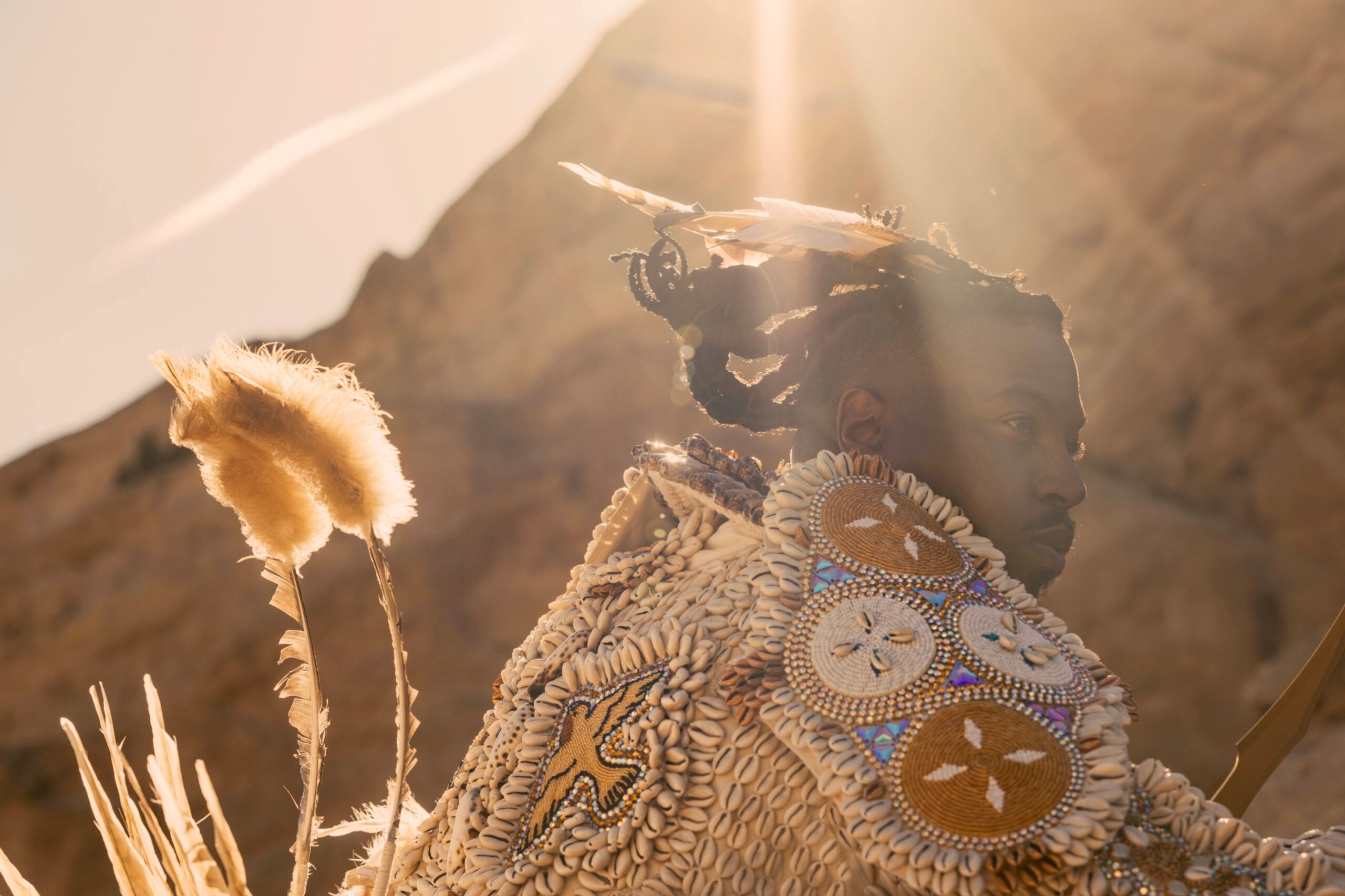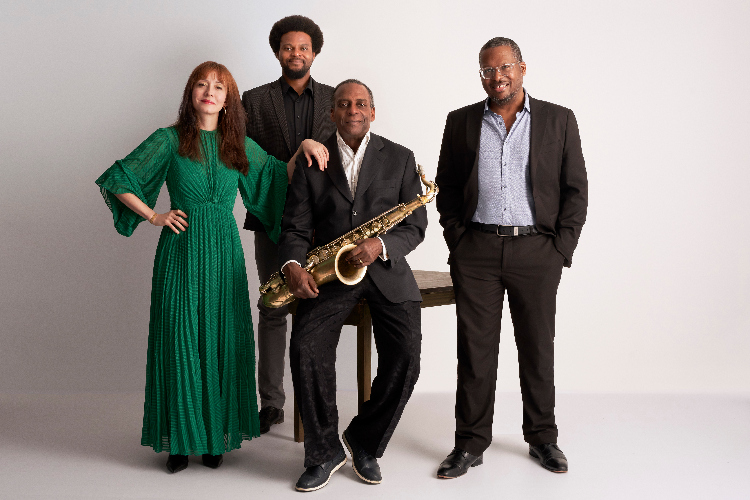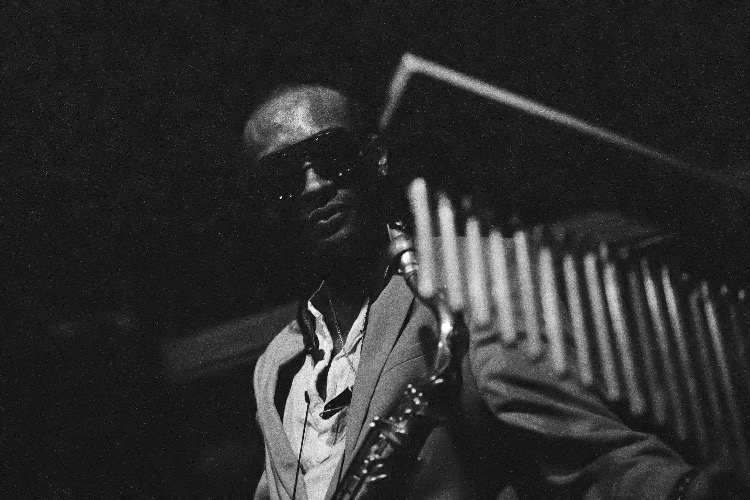Past, Present, and Future: A Conversation with Chief Xian aTunde Adjuah, Chieftain of the Xodokan Nation of Maroons and Grand Griot of New Orleans (Part One)
|
Getting your Trinity Audio player ready...
|
Many attribute the phrase “History is a series of lies that people have agreed upon” to Napoleon Bonaparte, allegedly stated after his defeat at Waterloo in June 1815. Perhaps fittingly, there is some controversy on the origins of the quote. However, the substance behind the sentiment is undeniable. As Chief Xian aTunde Adjuah, formerly known as Christian Scott, reveals in our conversation on his album Bark Out Thunder Roar Out Lightning (Ropeadope/Stretch Music, 2023), such misconceptions also permeate the narrative of the legacy of Black music.
Few would debate the importance of New Orleans’ Congo Square as the roots of modern Black music, from the oldest Blues forms straight through to EDM and hip hop. But far too often, the reality of what occurred in that special place is obfuscated from the record. The prevailing narrative is that Congo Square’s Sunday gatherings consisted solely of enslaved people. Undoubtedly, enslaved people did attend such gatherings. But this one-sided perspective ignores a critical element of the development of that sacred space – not all participants were enslaved. Many Congo Square attendees, leaders even, were Maroons – descendants of Africans in the Americas who escaped from slavery and formed their own settlements. Often, Maroon communities also expanded beyond solely people of African descent to incorporate others ostracized in a majority white society, including indigenous people and even white people society considered “not white enough.” While often left out of the discussion of modern music’s origins, Maroons played a central role.
So, why is the truth about Maroon contributions not better known? A looming answer lies in historical racism belittling the brilliance of what was happening at Congo Square. From the 1840s to 1880s, white “intellectuals” like George Washington Cable and Louis Gottschalk brought the space to public acknowledgment with a distorted presentation. The Square was often depicted as some exotic site of sexual abandon, completely ignoring what was truly taking place there. Such white theorists could then, in turn, use such depictions to prop up the fallacious argument that somehow Black people were “backward” or inferior to them and, by implication, should not be free to live their lives as they see fit. Presentation of Maroon people – brave, prosperous, and free, despite the oppressive predominant society – obviously undermined this perspective. As a result, the contributions of Maroons in America are still largely overlooked. And, in the rare cases where acknowledged, terms like “Mardi Gras Indian,” instead of the more apt Afro Indigenous people or Black Indians, arguably minimize their significance.
Chief Adjuah knows the true history well, partly because he was born into it. His grandfather, Donald Harison, Sr., who heavily studied the history of Afro Indigenous people, founded the Guardians of the Flame tribe. He would regularly spread his knowledge of tribal nation culture across the world. Big Chief Harrison’s wife – Herreast Harrison – and his daughter – Cherice Harrison-Nelson – continue his legacy with the Guardian Institute, a museum and educational organization dedicated to supporting New Orleans’ indigenous cultural arts. Big Chief Harrison’s son, NEA Jazz Master Donald Harrison, Jr. is, fittingly, Big Chief of The Congo Square Nation Afro-New Orleans Cultural Group. Donald Jr., is also an acclaimed saxophonist and esteemed mentor and educator, including to Chief Adjuah. Chief Adjuah’s connection to Afro Indigenous culture has been evident throughout his career. The album art for Christian aTunde Adjuah (Concord, 2012) finds him donning tribal garb. Elements of tribal culture also imbue Stretch Music (Ropeadope/Stretch Music, 2015), The Centennial Trilogy (Ropeadope/Stretch Music, 2016), and Ancestral Recall (Ropeadope/Stretch Music, 2019).
But Bark Out Thunder Roar Out Lightning takes those influences further. The album finds Chief Adjuah putting aside his horn to sing and play a custom-made kamele n’goni gravi-hybrid, the Adjuah Bow. The instrument change provides a more ancient-sounding element to the work than has been evident in his other recordings. At the same time, however, Bark Out is not mired in the past. Careful listening reveals electronic soundscapes not unlike on Stretch Music. Even more interesting, the rhythms used on both recordings are clearly from the same source. The result is an album that stretches music not solely beyond genre but conceptualizations of time as well. Bark Out Thunder Roar Out Lightning is a time-transcending masterwork of folk music, in its truest and most beautiful sense; as an art form of, by, and for, the people.
PostGenre: What is the biggest misconception about Afro Indigenous music?
CA: Well, I think the biggest misconception many people have is that the music is just some extension of Carnival expressions or Carnival revelry. They often think that the association is almost exclusively with Carnival time and fail to acknowledge the fact that most of the tribal banners and nations that you see, even at this point in the twenty-first century, are deeply connected to that area and the history of that space. Some of those nations can trace their origins back to the seventeenth century. Their forefathers were sovereign men. Those in each nation know their histories. They also know their nation’s legends and myths, as well. Oftentimes, the way [Afro Indigenous culture] is handled and talked about, with all the nomenclature around it, makes it hard for people to fully appreciate it for what it is.
PG: You mean terms like the pejorative “Mardi Gras Indians”?
CA: Yes, those labels can make it very difficult to get people to take a wider view and realize that what you’re looking at with the nations is not a Carnival expo. It is an expression of our African and First Nations retention system rooted all the way to the beginnings of the place we now refer to as New Orleans.
I think, in general, there has always seemed to be an intention to separate the African retention expressions that exist during Mardi Gras from the Maroon traditions of the region. But they’re actually one and the same. We know that Maroons, in the Americas, have a very specific history. I think in certain corridors, using that kind of terminology [you referred to] can immediately make you a persona non grata because you’re essentially talking about and dealing with a group of people that did not accept the colonial rule and the colonial tendency to dehumanize groups and essentially make them cattle.
PG: Could you provide some more context on Maroon communities since they are often overlooked?
CA: These Maroon communities were, I think the linear definition would be, self-liberated. Africans go into the bush and defend the bush, and Greeks try to recreate their society. This kind of idea, right?
But the closer you look at it, you realize that those communities were inundated with people from not just African realities but also First Nation realities. And it included many people who descended from the European indentured service classes. And, other people who were of European descent but marginalized and otherized in their own communities. As an example, when the Irish first came to this country, they were not accepted into whiteness, and neither were Italians, right? Those things happened over time. If you look closer at the history, those groups were barred from a very specific level of rights that we have in this country, rights that were reserved only for a certain group of people. You’ll find that Maroon communities are full of people from all these large cultures.
My contention has always been that those communities have always been in the Americas. The actual reservoirs of deep humanity like these are spaces where people do not engage with each other based on color, type of religion, or any of those things. These are folks who are intentional about making sure that they’re tried as human beings. I think what bothers me most about it is all of those nuances and beautiful things that are components of our larger history never end up in the story. When I say never, I mean never, man. They never come up.
I think some of that has been changing with the campaign we’ve been on, with Bark Out Thunder Roar Out Lightning, to illuminate those components of the history. But, in general, those things get completely skipped over and are essentially reduced to just being Black men in feathers masquerading as Indians and miss the point entirely.
PG: As far as people missing the point, the reviews of Bark Out Thunder Roar Out Lightning have been interesting. They are, generally overwhelmingly positive but far too often harp on whether the music is some poorly defined concept of “jazz.” Of course, you have referred to your music as “Stretch Music” anyway. You were previously quoted as saying “Jazz and hip hop are basically the same thing.” That aligns with a view I have long held that jazz never “died”; it just became hip hop. Similar demographics – mostly young, mostly Black, mostly urban musicians seeking a new form of expression that incorporates improvisation were behind both forms. So, the question for you is, as a New Orleanian trumpet player in the lineage that runs from Buddy Bolden and Louis Armstrong to Wynton Marsalis and beyond, do you ever feel pressured to more clearly fit into critical conceptions of “jazz”?
CA: No, because to be honest with you, I don’t think most critics really know what “jazz” is. I think the linear definitions of music ignore the truth of how the music was formed and where it was calibrated. Most people writing about the music don’t actually have a good sense of that at all, to be honest.
I was fortunate to grow up and learn the music in spaces where the old way is the priority. I was very fortunate to grow up learning the music in canon from people who included the children of the original practitioners and masters. There is a language and a vernacular that most people use while those often called “jazz” musicians don’t speak that language.
Actually – and I don’t like either of these words, just to be clear – the word “jazz” is similar to the term “Salsa Music.” When we speak about “jazz” or “Salsa Music”, they’re both reductions. The word becomes a shitty substitute for when you can’t clearly define something that is improvised. If you go to Cuba, where people have participated in actual initiations into this music and learned the music the right way – the old way – and call what they are doing “Salsa Music,” they immediately know you don’t know what you’re talking about because what you’re calling “Salsa” they will say is a bolero. Or guaguanco. Or mambo, See how much more specific this stuff gets?
“Jazz” is the same thing. It has a language and a history. Most people, when they’re engaging with or dealing with it, completely ignore those histories. They’re more interested in improvising over music that moves and has harmony and interesting rhythms. But all those things, by themselves, don’t make music “jazz.” The music is a specific language that comes from a specific people in a specific culture and a specific place.
You couldn’t just walk into a space where they teach Wing Chun Kung Fu with some very general [Mixed Martial Arts] training, and automatically consider yourself Wing Chun. People who do Wing Chun will tell you that what you are doing isn’t Wing Chun. It’s the same thing with “jazz.”
I would contend that there are maybe thirty musicians who qualify as actual practitioners. These are people who are in canon, actually understand their histories, and actually did the work – apprenticing with master-level practitioners, excavating the language, and using those ways of communication to try and compel while connected to the older way. The overwhelming majority of musicians making the music under that abhorrent and belittling name, “jazz”, are not actually making that music.
PG: That characterization may offend some musicians.
CA: It doesn’t mean those musicians don’t get to do what they’re doing. It also doesn’t mean what they’re doing is not captivating or beautiful. It doesn’t mean their music doesn’t have the full dynamic range of the human experience. I’m not saying any of those things.
But reducing the tradition of the music to try and make everything someone is improvising over to fit into this all-defining term of “jazz” is callous. It is also indicative of a larger problem that exists in our larger creative circles, which tend to reduce the things African Americans or African descent people in the diaspora actually create.
I can’t walk into any space and say that I’m playing an Indian raga just because I have the capacity to play a raga. The people who do make that music would find it absurd. It’s the same with traditional Korean music. And it’s the same with traditional Celtic music.
Every other culture gets to benefit itself through actually kind of being closed off. We’re being honest about it there. And that’s part of the idea that Stretch Music is rooted in. If you’re a part of this, it is because you have had the initiations to join it. My contention has always been that “jazz” – if we’re using this word, which I don’t- is the music and sound of a culture that has its own levels of initiation. Lots of them, not small, little graduations. Actual graduation. It also has its own ritual practice and its own prime directives. But you’d have to be initiated to know what those are. You don’t do that by just getting a degree from Julliard.
We continue our Conversation with Chief Adjuah here. Bark Out Thunder Roar Out Lightning is out now on Ropeadope Records/Stretch Music. It can be purchased on Bandcamp. More information on Chief Adjuah may be found on his website.
Photo Credit: Eric Ryan Anderson




One thought on “Past, Present, and Future: A Conversation with Chief Xian aTunde Adjuah, Chieftain of the Xodokan Nation of Maroons and Grand Griot of New Orleans (Part One)”